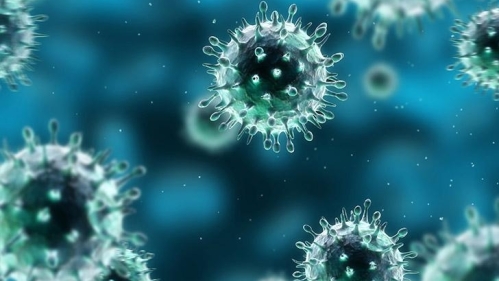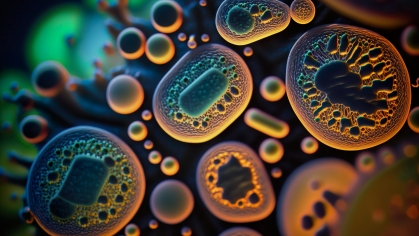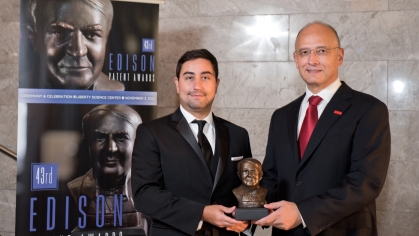Transforming Viral Diagnostics with Non-traditional Solutions

Since so many viruses mutate at rapid speeds, a fuller understanding of viral evolution in single cells could help accelerate the development of successful vaccines and treatments. Laura Fabris, a materials science and engineering associate professor in the Rutgers School of Engineering, has developed a new technique that identifies and measures viral RNA in individual living cells – and also detects the small changes in RNA sequences that might give viruses a winning edge.
Fabris’ research efforts have benefitted from her share of a $5.2 million Defense Advanced Research Projects Agency’s (DARPA) grant funding the multi-disciplinary INTERfering and Co-Evolving Prevention and Therapy (INTERCEPT )program grant that is in its final year. A project goal has been to design TIPS – therapeutic interfering particles – able to infiltrate and outcompete influenza and other viruses.
“Virologists need answers to questions,” Fabris says. “Our technique can help them answer questions in non-traditional ways. Sometimes you have to think outside the box and explore ways to solve problems that are non-traditional.”
“The DARPA INTERCEPT program has made a big difference for us,” she says. “INTERCEPT seeks to develop new vaccines and treatments based not on traditional routes, but on using viral RNA to fight itself. “Our role has been supportive – to provide imaging tools that make it possible to look at what happens inside a single cell as it replicates.”
While Fabris’ team has focused on using Surface Enhanced Ramen Spectroscopy (SERS) to detect Influenza A viral RNA and its mutations in living cells, the technique could be applied to any number of viruses – including SARS-CoV-2, the virus that causes COVID-19.
SERS detects changes in how individual molecules scatter light. By using gold nanoparticles infused with beacon DNA specific to Influenza A, with the SERS assay Fabris can readily detect the virus’s RNA. In the presence of Influenza A, the beacon produces a powerful SERS signal – in its absence, no signal is produced. As the virus mutates, increasingly weaker SERS signals are emitted.
“Because with SERS we can now look inside the cell, we can identify cells with high viral loads that can be called superspreaders,” Fabris says. “Our method also allows monitoring of the speed and conditions that can lead the virus to mutate as it replicates in a living cell.”
According to Fabris, while most current assays rely on fluorescence as a signal, a SERS assay is faster, cheaper, and easier to perform. This could make it an optimal tool for detecting and studying any number of viruses in the future. “We’re trying to integrate our platform with fluorescence as virology labs already have that equipment. Then, as virologists become familiar with SERS and see that it works, they can buy the SERS equipment.”
Fabris has been working with SERS for 15 years. “We knew the field, but what we are doing now is mind-blowing,” she says. While her lab was shuttered in March when the Rutgers campus closed because of the pandemic, it has been open at 50% capacity since early July. “People are staggered, our speed is lower, but we’re back and working to get back on track.”
In the midst of today’s global race to defeat the coronavirus, Fabris says, “While I’d rather do without the pandemic, there is a realization that this is an urgent project, so in a way I’m lucky to be working on a virus project now because I know I can contribute to our fight against it, in some way.”
To that end, Fabris is eager to begin work on identifying regions of the COVID-19 genome to target with SERS probes to aid virologists in diagnostics.
“With the pandemic, we’re in an emergency mode, which means there’s a need to speed up,” she explains. “Accuracy is one of the biggest issues raised when moving too fast and fast. Low-cost antigen methods for detection have let us down. We can contribute to that fight by providing new and rigorous assays based on SERS.”
Visit https://www.youtube.com/watch?v=q-jt1VxwsBo&feature=youtu.be for a video about Fabris’ SERS technique.


